Athens – Greece’s capital and a city that was once the lifeblood of an ancient and powerful empire.
Athens was our last stop in Greece before our ship sailed back to Italy. It was also the stop I’d been particularly looking forward to. It has been a long held dream of mine to climb the Acropolis. When you embark on something you’ve waited so long to do the hope is that it will live up to your expectations.
I’m happy to report that on this occasion my wait was rewarded.
We were lucky to have a fantastic guide for our day in Athens. Her knowledge of the city and its dramatic history was impressive. As we navigated the streets of Athens early on in the tour our guide pointed out well-known sights such as the Temple of Zeus, the Tomb of the Unknown Soldier and the former Royal Palace. Today the palace acts as the Greek House of Parliament. We also passed the University of Athens and the National Library.
Unfortunately the only photo opportunities for these sights were through the bus window as we drove past.

The first stop where we were able to get off the bus was at the Panathenaic Stadium. Our guide explained that it was at this stadium the first modern Olympic Games were held in 1896. It felt quite something to visit the place where the Olympic dream began so many years ago. Although I suppose when looking at it in comparative terms one hundred and twenty years is a drop in the ocean compared to Greece’s thousands of years of history.

Our bus then took us to the Plaka, which is the centre of historic Athens and sits at the foot of the Acropolis. We were given two choices once arriving there – continue with our guide to climb the Acropolis or enjoy free time in the Plaka.
Climb the Acropolis or hang out at The Plaka? Oh, let me think about that for a minute. In actual fact there is a lot to see in the Plaka area and I’ll come back to that. But I was there to climb the Acropolis.
Once again, we had a perfect cloudless day. I was a little concerned that it might be too hot for such a climb but the surprising thing is that the uphill walk is not as steep as it appears from ground level. There are several sets of steps and paths and so much to stop and look at on the way up. Not a Sunday stroll, obviously, but well worth the effort once you get to the top.
I’ll quickly point out that the term “Acropolis” in Greek actually means “highest point”, which would refer to the fortified area of elevated ground on which the remains sit. But the ancient structures of Athens’ Acropolis are of such significance that the site has taken on the name “Acropolis” as its very own.
If you’ve never climbed the Acropolis before then, like me, you’ll probably have your sights set on reaching the top to the most famous structure on this rocky outcrop – the Parthenon. But actually there is a lot more to see.
My pick were the theatres. We had a fantastic view of The Theatre of Dionysus as we tracked upward. Although what you see today is mostly remains from the Roman era it’s believed that the first play was staged at the theatre around 530 BC. Can you believe that? The birthplace of European theatre. Seeing historic sites such as this always helps me keep perspective. Our lives are a pinprick in time compared with the millennia that has gone before us.

The other theatre we stopped to admire was the Herodes Atticus Theatre, also known as The Odeon of Herodes Atticus. This theatre is younger than the Dionysus and was built by the Roman philosopher Herodes Atticus around 161 AD. That’s a very long time ago. But get this – it is still used today for classical theatre performances and musical concerts. It was restored during the 1950’s and since then great names have performed there – Maria Callas, Frank Sinatra and Luciano Pavarotti to name a few. I imagined how incredible it would be to attend a performance there seated under the stars. We were told it’s quite an experience acoustically. Definitely something to add to my bucket list.
As we reached the entrance to the Parthenon my husband and I both noticed the neighbouring structure, which our guide explained to us was the Erechtheion. Construction of this ancient temple began in 420 BC and was completed in 406 BC. It was dedicated to both Poseidon and Athena. I thought this temple had a particular beauty and elegance about it, especially the six caryatids – carved female figures serving as supports in place of columns.

Next came the main event of the day – the Parthenon itself. Before you get to see this most famous of structures you first pass through the Propylaea, the towering entrance to the plateau of the Acropolis and the Parthenon.
I’ve always said that photographs and seeing something on television can only take you so far. You’ll never know how it feels to stand on the Acropolis and walk around the Parthenon until you actually do it. This impressive temple was built between 447 and 432 BC and was dedicated to the goddess Athena.

I felt much the same as when in Rome – filled with awe and marvelling that any remnant of this ancient civilisation still stands today. It’s a pity that, as with the Colosseum in Rome, there is often scaffolding and maintenance work afoot when you visit but that is simply a reality. Try to see past it and imagine how the structure must have looked during its golden age.

I mentioned earlier how excellent our guide was. Her knowledge of Greek mythology and how it all tied in with the Acropolis was astounding. I could write pages but it’s something quite special to learn about it when you’re actually there. So if you’re going to trek up the Acropolis it is one occasion when a guided tour is a must. You don’t want to miss a thing!
Speaking of our tour, it ended at the Parthenon and we were free to spend some time and then make our own way down. By the time my husband and I were back at ground level we were pleased to see that we had a little time to spend in the Plaka before meeting up with our bus.
After all that exercise we were both starving and ready for a late lunch. There’s no shortage of cafés and restaurants to choose from in the Plaka, especially when eating al fresco on a beautiful day. Considering it was my last day in Greece I took the opportunity to order my all-time favourite Greek dish – moussaka. Aubergines, spiced meat sauce and creamy béchamel. What’s not to like? You must order it at least once while you’re in Greece.
And there you have it – a day in Athens and the realisation of a long held dream. My only disappointment was that we didn’t have more time to look around the Plaka. There are many nearby museums and good shopping. It’s such a vibrant, lively area. I loved it. Perhaps I shall have to return to Athens and do the Plaka justice next time.
Seeing as Athens was our last stop in Greece it seemed only fitting that I should end this blog with a recipe for my all-time favourite Greek dish – moussaka. My take on this famous dish may not be the most authentic but it’s easy to put together and tastes fabulous. I always find it such a satisfying meal. Aubergine is one of my favourites and you can never go wrong with a flavour-filled meat sauce. As for the béchamel, I’ve been known to say that anything starting with a roux has great possibilities.
I’ve used beef mince in the meat sauce. Lamb mince is more traditional but my husband finds the taste of the lamb mince a little strong. But if you’d prefer the lamb then go with that.
This dish is made in three parts, which I realise may seem like a lot of effort but they are all easy and straightforward. Once it’s in the oven you can forget about it for a bit and simply enjoy the aromas that fill your kitchen.
Moussaka
Serves 4-5

Meat Sauce
2 tablespoons olive oil
500g beef mince
1 large onion, finely chopped
3 cloves garlic, finely chopped
¾ teaspoon cumin
¾ teaspoon cinnamon
¾ teaspoon allspice
1 tablespoon chopped fresh thyme
Salt and pepper
1 x heaped tablespoon tomato paste
1 x 400g tin chopped tomatoes
Vegetables
3 large potatoes
2 aubergines
Béchamel
50g unsalted butter
50g plain flour
500 ml full-fat milk (plus a little extra)
Salt and pepper
Freshly grated nutmeg
2 egg yolks
Parmesan cheese for grating over the top
When making meat sauces I always brown the meat separately and generally do this first. It also means you can drain off a bit of the excess fat before adding the meat to your dish. So get a pan nice and hot (at this stage I also heat the pan I’m going to make the meat sauce in), add a dash of oil and then your mince. It should start sizzling straight away if your pan is hot enough. Stir it around, breaking up any large pieces until it is all browned. At this stage you can drain off the fat if you wish. Leave it to one side.
Add the olive oil to your pre-heated pan and then the onion. Sauté until soft and translucent and then add the garlic. This should only take a minute or so to sauté. Now add ½ teaspoon each of cumin, cinnamon and allspice. Stir this in for a minute or so and give the spices a chance to sizzle with the onions and garlic.
Next add the browned mince and stir through well. Add the last ¼ teaspoon of cumin, cinnamon and allspice, the fresh thyme and also season at this stage. You do need to be generous because meat sauces need robust seasoning (start with ½ teaspoon salt and a good grind of pepper and then correct once the sauce is cooked).
Stir through the tomato paste and finally the tin of chopped tomatoes.
Lower the heat, cover and let the sauce simmer for half an hour. Take the lid off and leave it to simmer for another five minutes or so to reduce any excess liquid.
While the meat sauce is cooking you can get on with the vegetables. Couldn’t be easier. Peel the potatoes and cut them into ½ cm slices lengthways. Trim each end of the aubergine and then cut into slices of approximately 1 cm, also lengthways.
Cook the potatoes first. In a hot frying pan add olive oil to create a thin layer and place the potatoes in a single layer on the base of the pan (you may need to do this in batches depending on the size of your pan). Sprinkle over some seasoning and let them sizzle for a few minutes on each side until cooked and softened (although don’t overcook them so they start falling apart).
Once cooked transfer them to a plate lined with kitchen paper. Repeat the process for the aubergines – you will need to do this in batches because the aubergine slices are larger. Remember that aubergines soak up oil very easily so you will need more olive oil than you did for the potatoes. Aubergines cook quite quickly so watch closely. Once cooked transfer them to plate lined with kitchen towel.
The final step to make this delicious dish is the béchamel.
On a medium heat add the butter. Once it’s melted and is just starting to sizzle add the flour. Stir the flour vigorously into the butter until it’s fully combined. Now you want to cook this, stirring continuously, for a good couple of minutes to cook off that flour taste.
Have the milk heated and ready to go (I pour it into a glass measuring jug and pop it in the microwave for a couple of minutes). Add the milk slowly at first, stirring the whole time. This is the key to a lump-free béchamel – stir, stir, stir! Once you’ve got a nice smooth paste going you can start adding the milk more freely.
Once all the milk is incorporated, season and then grate over some fresh nutmeg. Have a taste and correct the seasoning if you need to. Bring it just to a simmer and then remove from the heat.
You may have noticed that I’ve seasoned each component of this dish as I’ve made it. When you do this it ensures that your dish will be beautifully seasoned throughout.
At this stage I add a little extra milk if I think the sauce looks too thick – doesn’t matter if it’s not warmed. It also helps to cool the sauce for adding the egg yolks, which you can do now. Give it a good stir until all the egg yolk is smoothly combined. The yolks turn the sauce a gorgeous colour and give it a silky texture.
Okay, it’s now time to construct your moussaka.
You’ll see below the oven dish I’ve used. If you want to use a larger dish and feed more people it’s easy enough to double the recipe.
Lightly oil the dish with olive oil. Layer the potatoes across the bottom of the dish and then layer the aubergine slices on top.

Pour the meat sauce over the vegetables and smooth it out.
Finally, pour over the béchamel and also smooth this out so it covers the meat sauce entirely. Grate over some fresh parmesan cheese.
Place the dish on an oven tray and then bake in the oven for 35-45 minutes. It should be hot and bubbling and golden on top.
Once out of the oven, it’s best to leave it to rest for 10-15 minutes before you start slicing and serving. Torture I know but it does make a difference.
It doesn’t matter how bad your day has been – this will make everything feel better.









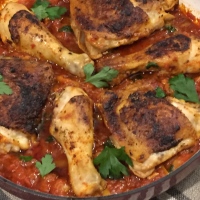
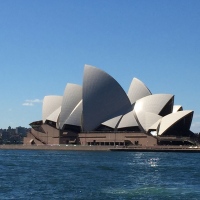


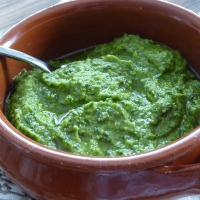
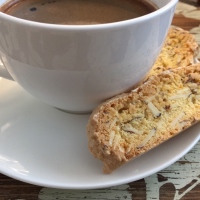
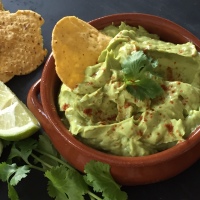
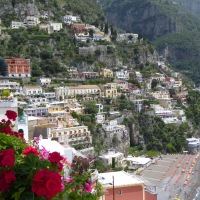



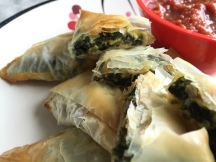











Think I could eat TWO helpings of that-Yum!!
LikeLiked by 1 person
A wonderful place to visit,a lovely day.
LikeLiked by 1 person
One of my best ever days!
LikeLike
Very interesting. That climb to the top sounds great. Love the look of the dish. Not sure however if I’m up to having a go at it!!
LikeLiked by 1 person
It’s a great experience. You should definitely have a go at the Moussaka – it’s well worth the effort!
LikeLike
I swear when we were there 10 years ago they were working on that. Must be like our freeways around here, they are always working on them . . . never seem to finish or help with the flow of traffic.
I decide that I am going to make Moussaka this year. I have been collected recipes since I was in Greece.
LikeLiked by 1 person
Thanks so much for stopping by. Yes, it’s hard to imagine being lucky enough to visit when there’s no work going on! Enjoy making your Moussaka – so delicious.
LikeLiked by 1 person
I will get around to it one of these days. Just like I will get back to Greece one of these days. Thanks for sharing your trip!
LikeLiked by 1 person